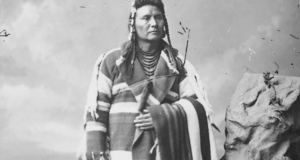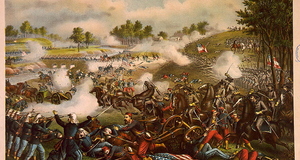From Discussions VOL. 12 NO. 1Questioning Community in the Ku Klux Klan
By
Discussions 2015, Vol. 12 No. 1 | pg. 1/1
IN THIS ARTICLE
KEYWORDS
This is the first line from the Ku Klux Klan's (KKK) "Objects and Character of the Order" (Horn, 1939, p. 38). Although these are not words that most modern Americans would ascribe to the Klan, one will find descriptions that depict the Klan as "instruments of justice" (Horn, 1939, p. 46). Some even say that they, "against overwhelming odds, daring exile, saved the lives of a people" (Dixon, 1967, p. 10). Despite this, however, most people certainly do not view the KKK as many scholars agree it once was. Words such as terror, murderous, or law-breaking are often associated with the Klan (Trelease, 1971, Title Page). So, why the disparity? Of course, the KKK is a horrific blemish on American history. They were a group that terrorized not only a race or community, but also an entire nation. The Klan, like any group, had its beginnings. A strong sense of brotherhood and loyalty existed in its community. It was this community that led to the violence and destruction for which the Klan was all too well known.Origins of the KKKWhat were these initially "innocent" origins of the Klan? The Ku Klux Klan was originally founded in the town of Pulaski, Tennessee by six young, bored, white men. It all began one night, when one of the men said, "Boys, let's get us up a club" (Martinez, 2007, p. 8). The six men who were all of high standing in their community had served in the army and had unblemished records (Horn, 1939, p. 9). Elaine Parsons even said that they were a "group of young men who went around town playing string instruments to the ladies" (Parsons, 2013, p. 811). These are not the kind of men that one might think created the Ku Klux Klan, since the Klan they created is not the same Klan it eventually became. It started out by participating in social activities, entertaining gatherings, inventing secret codes, and engaging in practices that one would expect from a group of young men who had just started a new, secret club. The sole purpose of these early gatherings was to basically function as the initiation process. They first modeled themselves after college fraternities, with their name even coming from the Greek word Kuklos, meaning circle or band (Trelease, 1971, p. 4). Mysterious and haunting names such as "Grand Cyclops" and "Magi" were only created because the men were tired of the ordinary military ranks. Initial Activity of the KlanFor the first few years after the Klan was created, the founding members mainly involved themselves with the initiation process and carried out fraternity-style pranks (Martinez, 2007, p. 13). In 1869, they drafted the "Objects and Characters of the Order," which outlined an organization devoted to justice and aimed directly toward helping those affected negatively by the civil war, mainly the widows and orphans. For a while, the Klan adhered to these policies; there are numerous reports of sums of money, as well as food and other necessities, being left at doorsteps of those in need with notes signed by a mysterious "Grand Cyclops of the Order" (Horn, 1939, p. 44). Secrecy of the KlanDue to the initiation process and the fraternity environment in which the Klan first lived, strong bonds were formed among the men. Because they underwent such a strenuous and often embarrassing initiation, they felt as if they had accomplished something, as if they had earned a spot with their fellow brothers. Another factor in the men's closeness was the secrecy within the Klan. The KKK, from its very beginning, maintained utmost secrecy about all of its actions in order to accomplish two goals. First, it made prospective members eager to join; the KKK never openly advertised itself or solicited possible future members (Horn, 1939, p. 15). Every once in a while, a man was approached and given the opportunity to undergo initiation if the Klan deemed him worthy of the robe. Secondly, the Klan's secrecy kept its actions hidden from all but those who were a part of it. This oath to secrecy brought the men closer together, as they had to remain completely loyal to one another and were not allowed to discuss Klan business with anyone else. Showmanship of the KKKThe final piece to the strength of the KKK's community was its showmanship. Ritual and performance were vital elements of the Klan. At first, showmanship was the only thing besides initiation and charity in which the men could engage. Even once the Klan became dangerous, they would frequently make purely performative appearances before they moved on to violent attacks (Parsons, 2013, p. 817). These performances were strange and often confusing components of the Klan. It seemed, sometimes, that they put on these elaborate shows simply to amuse themselves. Other times, it seemed as though the Klan had clear purposes behind its midnight shows. Whatever the case, the Klan's showmanship augmented its mystique. PerformancesThese performances began with the "Pulaski 6" as the founders were called (Martinez, 2007, p. 9). Due to boredom, one night they donned the popular Halloween costume of a ghost, and clad in their white sheets, rode through town as a joke. Many of the former slaves were scared due to their superstitious nature, and though it did not act on this immediately, the Klan realized the potential of scare tactics early on. As the Klan grew, the performances became more and more elaborate and were imbued with symbolism and tradition. However, those were not the only reasons for its theatrics, as the Klan knew potential victims were not its only audience. Parsons writes that "Klansmen had everything to gain by encouraging northerners to read their attacks as theatrical, rather than political or military" (Parsons, 2013, p. 813-814). This scheme proved to be successful. For the longest time, Northerners believed the Klan to be "farcical" and a "piece of the broadest and most ridiculous fun" (Parsons, 2013, p. 813). Even when the Klan began its more violent raids, its theatrics succeeded in keeping the North clueless as to its real purpose. Eventually, the Klan grew tired of simple social activities, and began to use the former slaves' superstitions to its advantage. Often, they used ghost-like tactics to scare freedmen into "keeping in line" (Horn, 1939, p. 18-20). They claimed that they were "upholding justice" and "keeping the peace;" both phrases that the Klan would use to justify its actions throughout its active years. At first, the Klan only used violence as a defensive measure. They began by harming those who had betrayed the organization or government spies who had attempted to infiltrate the Klan. But once it got a taste of blood, the Klan spread its acts of violence quickly to its theatrical raids. Due to its mysterious nature and sonorous name, the Ku Klux Klan spread like wildfire, and local Kl.ans, known as dens, began to pop up all over the South (Hom, 1939, p. 11). They began to conduct raids, claiming to be ghosts of Confederate soldiers. For a while, these little shows, often involving elaborate tricks to prove that they were, in fact, ghosts, were effective. But slowly, people began to take the threats less seriously, and more drastic measures had to be taken. It was at this point that the modern Klan truly began to develop. As it grew, its motives became far more political, and it began to target not only African Americans who were attempting to exercise their new rights, but also any white republicans who stood up for African Americans (Foner, 1988, p. 127). In support of this, one author writes, "Violence had a profound effect on Reconstruction politics. For the Klan devastated the republican organization in many local communities" (Foner, 1988, p. 442). The quickly multiplying dens, all behaving erratically, led Klan leadership to attempt an organization of the KKK on a national scale. To some extent this worked, setting up a government with positions that began with the Grand Cyclops of a den up to the Grand Wizard. The first person who held this title was reportedly Nathan Bedford Forrest, a Southern Civil War hero (Ashdown &. Caudill, 2005, p. xiii). However, the very fact that there is still some debate over whether or not this well-known figure actually held this position, or was even in the Klan at all, shows the true depth of the Klan's secrecy and covertness. Although this new leadership did bring the Klan into a somewhat more orderly state, it also resulted in the elevation of preexisting violence. Foner writes, "One should not think of the Klan, even in its heyday as possessing a well-organized structure or clearly defined regional leadership. Acts of violence were generally committed by local groups on their own initiative. But the unity of purpose and use of common tactics..." (Foner, 1988, p. 425). Not only was the violence becoming slightly more organized, but the dens were working more cohesively. They began employing tactics such as having the neighboring den carry out the more violent raids while alleged members of that town's Klan remained conspicuously uninvolved that evening. This ploy made the already weak attempts oflaw enforcement to halt Klan activities even more futile, giving the KKK more confidence, which resulted in even more violent crimes (Horn, 1939, p. 48). One extremely important and somewhat obvious side effect of the Klan's popularity and growth is that it gained an astonishing number of members. Parsons writes that "What tied Klansmen together and caused them and others to understand their actions as a part of a greater whole was the powerful and multivalent image of the Klansmen that emerged in popular culture," (Parsons, 2013, p. 817). These men all stayed together because they had created their own identity. These otherwise ordinary men could become part of something else. This anonymity allowed them the freedom to perform even the most heinous acts without any remorse; they were acting as a completely different entity. Another factor in the rise of violence was that these large groups of disgruntled men became susceptible to groupthink and mob mentality. Both of these words describe situations in which the members of a large group often lose the ability to think for themselves, and instead, begin to simply engage in whatever activity they saw around them. It was the Klan's original sense of community that led to the groupthink the Klan experienced. "Indeed, all they had in common, besides being overwhelmingly white, Southern, and democratic, was that they called themselves, or were called, Klansmen," (Parsons, 2013, p. 816). Many of the men who were involved in the Klan's raids would not have resorted to violence as quickly as the Klan did as a whole. Peer pressure to engage in these attacks affected many of the members. The intensity and closeness of the community only served to make the situation far worse, as it allowed for groupthink to lead to ever-escalating levels of violence. Community and brotherhood are two things that are universally seen as healthy and worthy pursuits. However, the KKK perverted these ideals and began to engage in unspeakable acts of violence towards their fellow man. ViolenceThe KKK's violence began with the small sporadic beatings of a few traitors, but it quickly spiraled out of control, and as the Klan grew bolder, the body count grew as well. One example of this violence can be heard from Alabama freedman George Monroe. "Klansmen came to his home, gave him a severe beating, 'ravished a young girl who was staying with my wife,' and wounded a neighbor. 'The cause of this treatment, they said, was that we voted the radical ticket," (Foner, 1988, p. 427). Another example can found in the story of Jack Dupree. During a raid, his attackers cut his throat and disemboweled him in front of his wife and twin infant boys because he was the president of a republican club and a man who was known to "speak his mind" (Foner, 1988, p. 426). Often, the raids did not target a single person or family. One attack left 150 people dead in Jackson County. The most violent and bloody of the Ku Klux Klan's attacks, however, was that of the Colfax Massacre on Easter Sunday, 1873. After a siege of three weeks, the KKK broke through the town's defenses, and slaughtered 280 men, women, and children. They continued butchering even after the town had surrendered, leaving the community's members' throats cut and bodies lying in a field (Schiller, 567, p. 437; Foner, 1988, p. 32; Fischer, 2010). Effects of the ViolenceActs of violence such as the mass-murder at Colfax, were extremely detrimental to national growth during the time. Claude Fischer writes about the effect of these acts of violence in his book, Made in America: A Social History of American Culture and Character. In it he writes, "Fuller control over the violence was delayed by the vast and bloody struggles over slavery, secession and race" (Fischer, 2010, p. 32). He then goes on to specifically mention the Colfax massacre, and how much acts like that hindered the reconstruction greatly. Another case about the Klan's impact is made by Foner, when he writes, "Violence had a profound effect on reconstruction politics. For the Klan devastated the republican organization in many local communities" (Foner, 1988, p. 442). We are still feeling the effects of the KKK's actions today. Mcveigh and Cunningham wrote an article for Social Forces concerning the impact of Klan activism and violence that lasted for decades after their dissipation. He writes, "We propose that processes associated with mobilizing a racist extremist movement can lead to changes in communities that make them more prone to violence" (2013, p. 847). The hatred and violence that were cultivated by this organization are not the kinds that simply dissipate with its death, or even the death of its members. Hatred that strong is passed down from generation to generation. The consequences of the actions of the Ku Klux Klan can be seen throughout our history and are still evident today. ConclusionHow did a group of six men trying to relive their fraternity days evolve into an organization capable of terrorizing and murdering thousands of Americans? When it started, the Klan always had a very strong sense of community. Its brotherhood and loyalty were its defining traits. Yet it was these very traits that turned the organization into something else entirely. What began as a potentially virtuous and beneficial group evolved into a terrorist organization for a few simple reasons. The community and secrecy lead to groupthink and mob mentality, which allowed a few violent men to sway an entire organization towards violence. This violence was fueled by anonymity and the environment in which the Klan operated. Their secrecy and theatricality hid their true nature from outsiders and gave them a cover under which they could work-a cover that blinds us even today. They perverted words like justice and law and even turned towards scripture in order to validate their actions. Organization only made matters worse, due to the ease with which the Klan could carry out its raids and attacks on communities. Because of these reasons, a social club started by six bored men in Pulaski, Tennessee became the most feared organization in America, one whose ghost still haunts the nation today. AcknowledgmentsThanks to Tracy Shilcutt for driving me to perfection, my friends for putting up with my research, and Neal Coates for pushing me to think bigger than myself. BiographyBorn in Manila, Phillippines, Alan Songer lived as a missionary kid until he was 12. He then moved to Tomball, Texas, north of Houston where he attended Providence Classical School. Throughout high school, he was an AllState Academic and an All-Star Basketball player, before being accepted to participate in the JUST program at Abilene Christian University. Alan is a third-year student double majoring in Criminal Justice and Sociology with a minor in Political Science. After graduating in 2016, he intends to enter law enforcement and work his way up to federal criminal investigation. References"American Memory: Born in Slavery." (2001, March 23). Retrieved November 9, 2013, from https://memory.loc.gov/ Ashdown, P., & Caudill, E. (2005). The Myth of Nathan Bedford Forrest. Lanham: Rowman and Littlefield. Dixon, T. (1967). The Clansman: An Historical Romance of the Ku Klux Klan. New Jersey: Greg Press Inc. Fischer, C. (2010). Made in America: A Social History of American Culture and Character. Chicago, Illinois: University of Chicago Press. Foner, E. (1988). Reconstruction: America's Unfinished Revolution 1863-1877. New York: Harper & Row. Horn, S. (1939). Invisible Empire: The Story of the Ku Klux Klan 1866-1871. Boston, Massachusetts: Houghton Mifflin Company. Martinez, M. (2007). Carpetbaggers, Calvary and the Ku Klux Klan: Exposing the Invisible Empire during Reconstruction. Lanham, Maryland: Rowman and Littlefield. Parsons, E. (2005). "Midnight Rangers: Costumes and Performances in the Reconstruction-Era Ku Klux Klan." The Journal of American History 92(3), 811-836. Retrieved September 19, 2013, from JSTOR. McVeigh, R. & Cunningham, D. (2012). "Enduring Consequences of Right Wing Extremism: Klan Mobilization and Homicides in Southern Counties." Social Forces, 90(3), 843-862. Trelease, A. (1971). White Terror: The Ku Klux Klan Conspiracy and Southern Reconstruction,. New York: Harper and Row. Suggested Reading from Inquiries Journal
Inquiries Journal provides undergraduate and graduate students around the world a platform for the wide dissemination of academic work over a range of core disciplines. Representing the work of students from hundreds of institutions around the globe, Inquiries Journal's large database of academic articles is completely free. Learn more | Blog | Submit Latest in History |



















